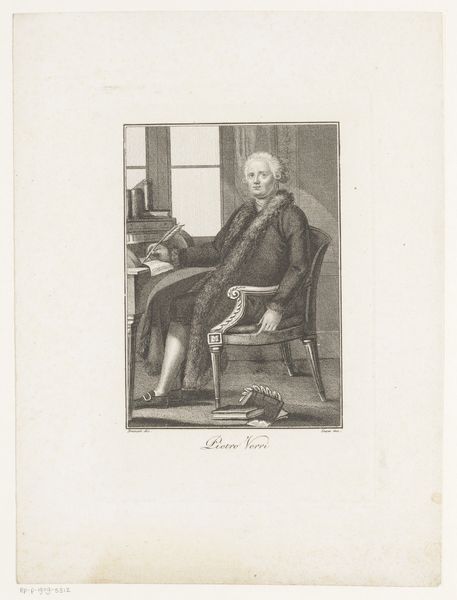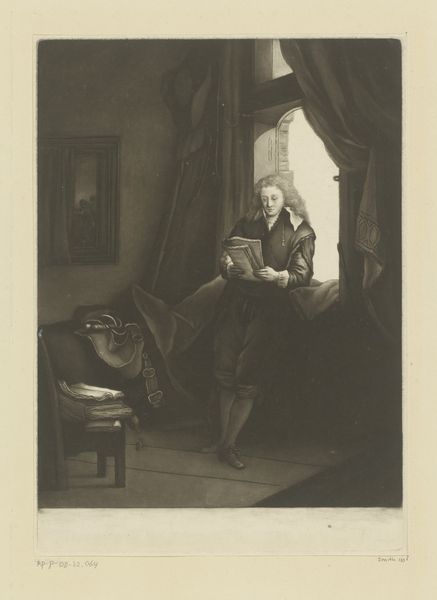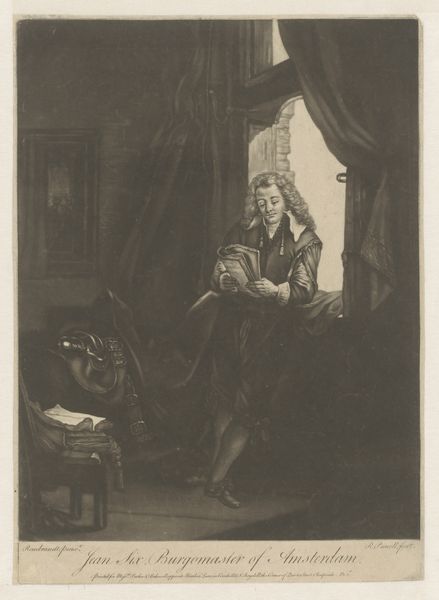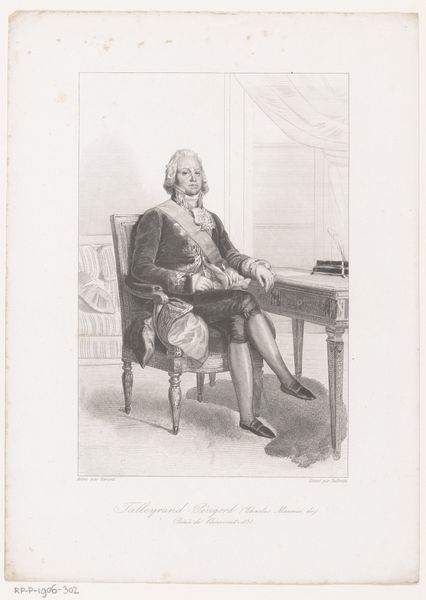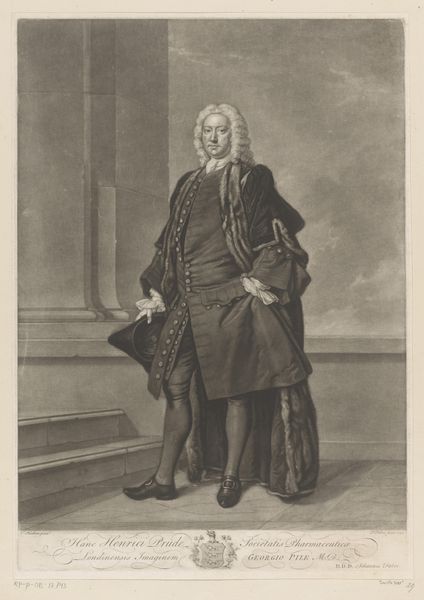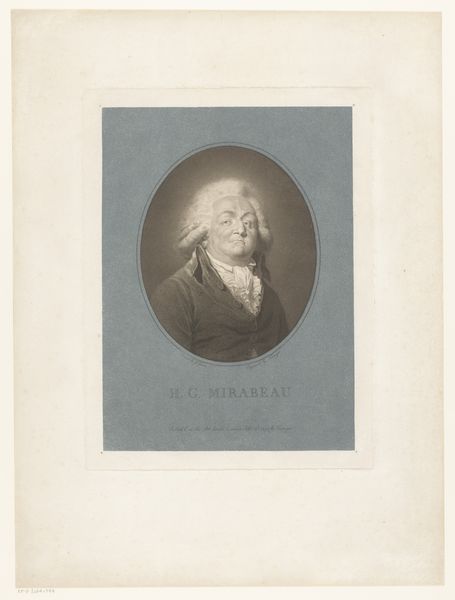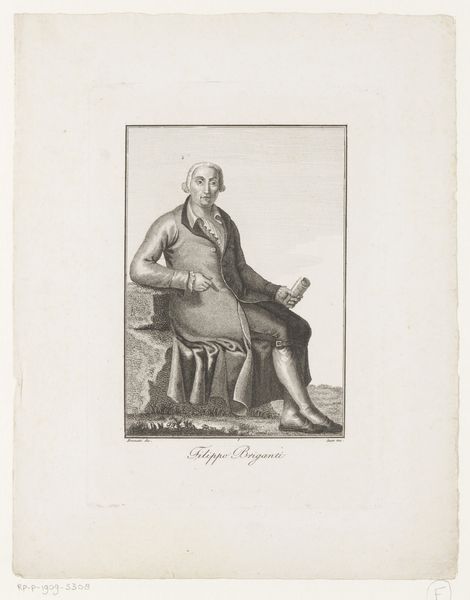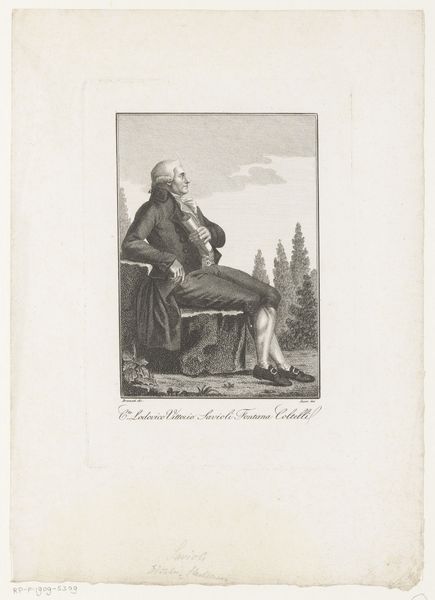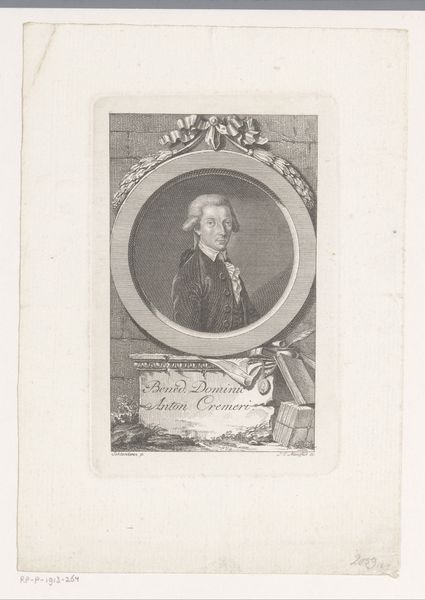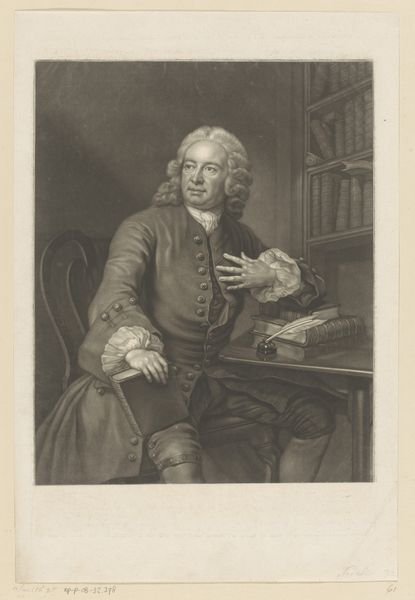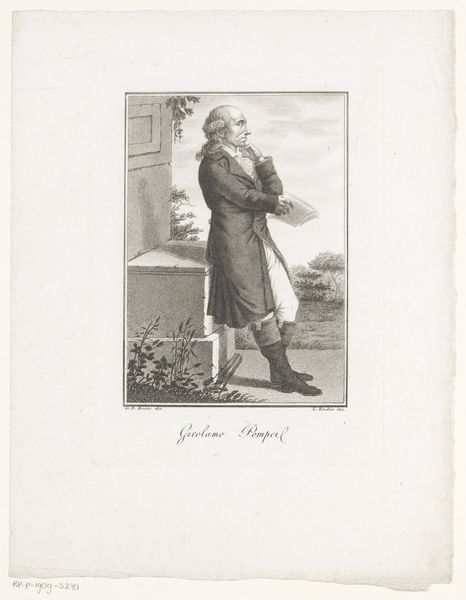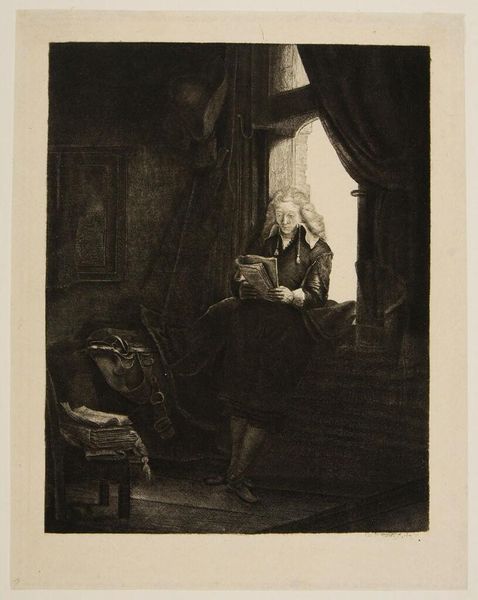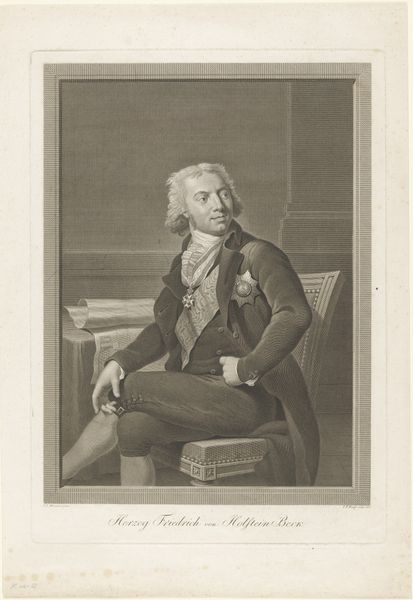
Portret van Benjamin Franklin en profile op een stoel gezeten 1749 - 1817
0:00
0:00
francoisdenisnee
Rijksmuseum
engraving
#
portrait
#
neoclacissism
#
history-painting
#
engraving
Dimensions: height 363 mm, width 219 mm
Copyright: Rijks Museum: Open Domain
Editor: This is a portrait of Benjamin Franklin by François Denis Née, made sometime between 1749 and 1817. It's currently at the Rijksmuseum, and it's an engraving, which gives it this really crisp, detailed look. He’s sitting there with his arms crossed, looking very pensive. It almost feels staged, but also a bit vulnerable. What strikes you most about this piece? Curator: Oh, vulnerability indeed. I find it quite intriguing, almost theatrical. He's framed, isn't he? Like a character deliberately placed on a stage. The window, the distant ships—they hint at Franklin’s world, the world of diplomacy and ideas. What I find really curious is how the artist, Née, presents him as a thoughtful philosopher rather than simply a politician or inventor. Do you get that sense, too? Editor: Definitely! It's interesting you mention the ships. It makes me think about his travels, his impact… He's not just some guy in a chair. But what's with the newspaper? Is it supposed to tell us something specific? Curator: Ah, the newspaper! Good eye! That’s where the fun begins, in trying to read the symbols, not just the man. Newspapers were still relatively new and potent then, powerful tools, and this one under his hat is 'Les Affaires de la Pensée' or 'Affairs of Thought,' as in "thought matters!". Consider that this piece arose within the Neoclassical art movement, an art of symbolism and grand messages about humanity. Maybe this connects to Franklin as representing rational, forward thinking, and perhaps even new power dynamics? The image almost suggests we all contain the power to discern "the True and the Divine", as written underneath. I feel quite humbled realizing the original intention, which really connects to my heart. Do you feel the connection to such older messaging in art? Editor: That's fascinating! It really does make it feel more intentional, like everything is placed to tell a story. I hadn't considered that Neoclassical art had this messaging embedded in its portraits. Curator: Exactly! Every element contributes to a narrative. I find, that as you look, the story blossoms over time, like spring. Editor: This conversation definitely has me looking at the portrait in a new light.
Comments
No comments
Be the first to comment and join the conversation on the ultimate creative platform.
